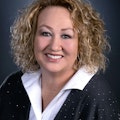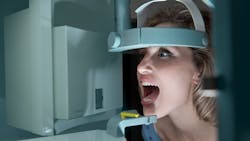Myth busters for dental assistants: X-rays are just a way to pad the bill
Patients don’t really need all those x-rays. That’s just how the dentist pads the bill. Right? Wrong!
There are several reasons we take many x-rays. Simply put, we can’t see with the naked eye what an x-ray can reveal. They give us a baseline for any future developments. Here’s an example. When my boss’s brother came to visit him after we opened, we got him in for a cleaning and a panoramic x-ray. The pano revealed a mass around no. 32. He sent his brother to an oral surgeon, who told him the cyst was so large he could have broken his jaw just by chewing gum. That’s why we take x-rays!
We also take x-rays to check for decay between the teeth or under existing fillings, for cysts and tumors, bone loss from periodontal disease (look for baseline and progression), abscesses, the position of adult teeth before eruption, to treatment plan for braces, and to see missing teeth, possibly for dentures or implants.
In children with primary dentition, it’s important to look for decay between the teeth. The enamel of primary teeth is so small that the decay can progress into the dentin very quickly and damage a tooth beyond repair in a matter of weeks. Finding and treating decay in primary teeth needs to move swiftly to catch it while it’s small.
Factors that play into the number of x-rays someone needs include their current oral health, symptoms of oral disease such as periodontal disease, history of decay, age (checking for bone loss as someone ages), and to use for a baseline in new patients.
MORE MYTH BUSTERS
Wearing those "stupid" utility gloves
No need to bag when sterilizing
People on social media are always helpful
The importance of x-rays
It’s not only important to take several x-rays per visit, it’s just as important to take x-rays that are of good diagnostic quality. Cone cuts and overlapping are not diagnostic quality. Sometimes we snap an x-ray and if we can make out an image, we go with it. This is not right!
Did you know an insurance company can deny a procedure if you do not submit good diagnostic quality films? I’ve heard stories about submitting for payment on a cleaning with radiographs, and the insurance company asks to see the x-rays. If the images aren’t diagnostic quality, insurance can deny payment. So, if you take an x-ray that is not good quality, don’t even question, just take it again!
Is it safe to take all these x-rays? Yes! The radiation that patients are exposed to through today’s x-rays is very low, so they’re perfectly safe. Radiation is cumulative, which means that our bodies gather it and never release it. However, many things we do every day cause us to gather radiation, like rays from the sun, buildings, and soil.
It’s important to educate patients
Patients often don’t understand that radiation is all around us, and they’re concerned about the doses they’re exposed to when we take x-rays in the dental office. Explain the x-rays to them so they can understand, and remember, they don’t know what we know. It’s our job to educate them. Make it your mission to ease their concerns about exposure. Lead aprons have come a long way in recent years and although the dose of radiation we use is small, a lead apron serves to give patients and parents peace of mind.
So, the next time you think you’re taking x-rays to pad the dentist’s bill, think again! Radiographs serve a much larger purpose in treating the oral cavity and heading off problems before they become bigger. Understand this, and let your patients know this.
About the Author

Tija Hunter, CDA, EFDA
Tija Hunter, CDA, CDIA, CDIPC, CDSH, CDSO, EFDA, MADAA, is a member and former vice president of the American Dental Assistants Association (ADAA), where she holds the honor of Master. She is the director of the Dental Careers Institute, a dental assisting and dental continuing education program, and the author of seven continuing education study courses. She is an international speaker and a certified trainer in nitrous oxide in several states. She can be reached at [email protected].
